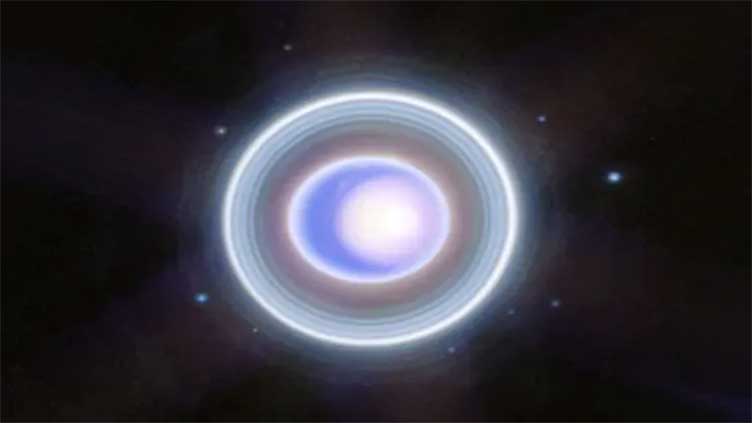Behold! Breathtaking Nasa images reveal Uranus in halo of moons and rings

Technology
The new images reveal the coldest planet in the solar system in stunning detail
(Web Desk) - The beautiful hidden symmetry of Uranus is on full display in new images released by Nasa and scientists using the James Webb Space Telescope.
Ghostly inner and outer rings shimmer faintly while the planet’s polar cap — which, unlike Earth’s, is located on its side — glows brightly.
Some, but not all, of the planet’s 27 known moons, float peacefully in their orbits.
The pictures were taken using the Webb Telescope's near-infrared camera, which offers a markedly more interesting and active view of a planet that, at first glance, can seem a bit boring.
The photos offer our best view of Uranus, perhaps since 1986 when Voyager 2 mission became the first spacecraft to explore Uranus.
Photos taken on that mission show Uranus as a calm blue marble, floating placidly in the inky black of space.
But that tranquil appearance is deceiving. As the new images show, Uranus is a dynamic and tempestuous planet — indeed, if you look closely, you can see huge storms raging near the pole.
The exact cause of these storms is still not fully understood, but they may be a fault of Uranus’ unique positioning: the planet spins on its side at tilt of 98 degrees.
It takes Uranus 84 years to complete a single orbit around the Sun, and parts of the planet endure 21-year long winters, during which the Sun doesn’t shine at all.
As the planet approaches its solstice in 2028 — the time when the pole most directly faces the Sun — scientists hope to use the Webb Telescope once more examine the ice giant to see how the solstice affects the planet’s meteorology.
As Uranus is the planet in our solar system that most closely resembles 2,000 of the far-off exoplanets that have been discovered, the hope is it has much to teach us about how these mysterious objects formed and, by extension, we can learn about more about the nature of our own little piece of cosmic real estate.



